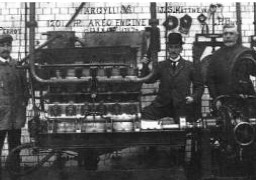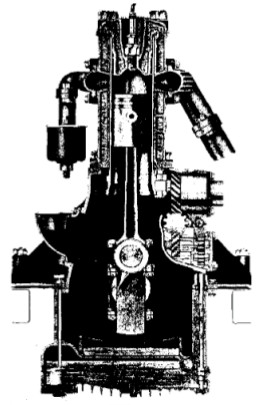Updated: 09-Jan-2020
In 1896 "Argyll Motor Co." started its activities in the automobile sector, which was emerging at that time.
-They struggled at first but in 1908 the company was reborn as "Argyll Ltd" in Scotland, near Glasgow.
-It was in 1910 when Peter Burt came to the company with a valveless engine project, which was accepted and introduced in vehicles.
-They made a prototype for aviation, the Argyll 120 hp with a sliding sleeve system.
-Meanwhile, in Canada, James McCollum HK patented a similar system.
-Over time, in aviation environment the two systems were known by the common name "Burt-McCollum". There was another different system that was called Knight.
-Certainly the Burt-McCollum was the engine that inspired the famous Bristol to develop their engines with sliding sleeves like the Perseus, Hercules and Centaurus.
-In fact engineer Roy Fedden was the maker of these developments, as he was one of the most experienced engineers in air-cooled piston engines of his time.

"Burt diagram"
-The crankshaft drives a drum with an eccentric pin through a chain. This pin drives the base of the sleeve by a ball head, allowing movement, making a circle and raising and lowering the sliding sleeve while at the same time turns it one way or another, matching ports in the cylinder's upper part.

"Argyll on a bench"
-The first engine destined for aviation was a six-cylinder, water-cooled engine with sliding sleeves, therefore there were no valves in the cylinder heads.

"Argyll, 120 hp"
-It stands out for having the cylinder heads "clean" of mechanisms.
-It gave 120 hp at 200 rpm with a total displacement of 786 cu. in..
-Furthermore, the mixture was supplied by Zenith carburetors and it used Bosch magnetos.
-The Burt V-12 project (see) was conditioned by Argyll's economic situation and other circumstances at the time (1914). However, one V-12 was built but just like the six-cylinder, it never flew.
-The Burt system passed over to US Continental Motors to continue their experiments on the basis of a Wright Whirlwind radial engine. 1927.
-And as has been said, the next step and a successful one was that of Bristol.

"Argyll logos"
From Appendix 10: New illustration on this pioneering engine with a Burt-McCallum type sliding sleeve system.

“The Argyll aero engine” (PiP-Flu)
Engines of ARGYLL
Model: Burt-McCollum, 120 HP

"Argyll, 120 hp"


